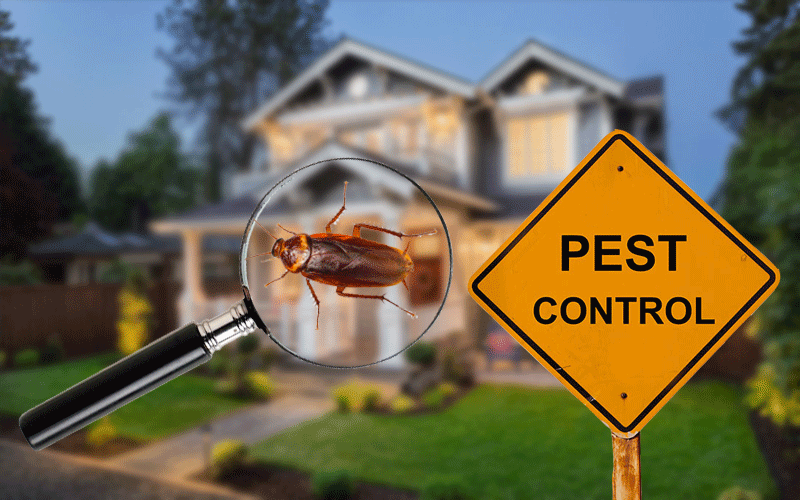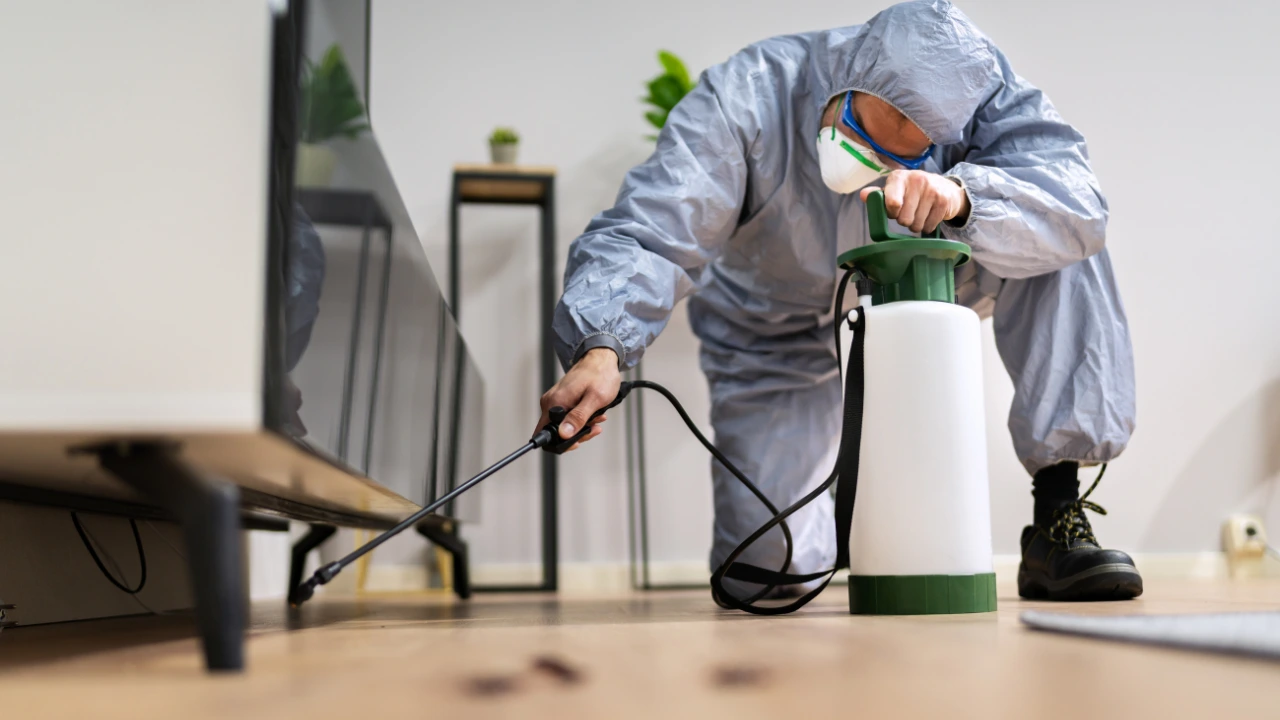Bug Control 101: Identifying Common Vermin and Their Effective Therapies
Bug control is a fundamental aspect of maintaining a healthy living environment. Typical bugs like ants, rodents, and various bugs can present substantial challenges. Comprehending their behaviors and signs of invasion is essential for efficient administration. While chemical services exist, there are additionally natural choices worth thinking about. As one discovers the subtleties of pest recognition and therapy options, the significance of prevention strategies ends up being progressively apparent. What techniques can absolutely keep bugs away?
Identifying Ants: Kinds and Their Habitats
Ants, little yet powerful insects, are a diverse team that can be found in various atmospheres around the world. There are over 12,000 recognized types, each showing special actions and adjustments. Usual kinds include the black yard ant, which flourishes in pleasant areas, and the fire ant, recognized for its excruciating sting, prevalent in warmer regions. Woodworker ants like damp wood, making them an issue for property owners, while scent-laden house ants are drawn in to human food resources.
Ants build detailed nests, usually underground, in timber, or within structures. Their environments vary from woodlands to urban settings, showcasing their versatility. Most species are social, residing in swarms that can vary in dimension from a couple of lots to millions. Determining the type of ant is vital for efficient parasite administration, as each types has different nesting practices and foraging actions that affect control methods. Understanding their environments help in avoidance and treatment initiatives.
Identifying Rodents: Indicators of Infestation
Rodents, like ants, can present considerable challenges for services and house owners alike. Identifying indicators of an infestation is necessary for efficient pest control. Typical indicators include droppings, which are often located near food resources or nesting areas; little, dark pellets that can be mistaken for seeds. Eaten cables, furnishings, or packaging might also indicate a rodent existence, as they continuously gnaw to keep their teeth manageable. Additionally, homeowners may discover gnaw marks on wall surfaces or walls. Unpleasant odors, originating from pee and droppings, can indicate a larger problem. Scratching or hurrying noises, specifically at evening, are one more indicator of rats. Finally, the presence of nests, commonly composed of shredded materials like paper or material, can verify a problem. Dealing with these indicators promptly can assist mitigate damage and protect against the spread of diseases related to rodents.
Common Bug Pests: From Aphids to Termites
Pests stand for a varied group of bugs that can create chaos in homes and gardens, with varieties ranging from tiny aphids to devastating termites. Aphids are little, sap-sucking bugs that can rapidly infest plants, leading to stunted growth and distortion. They typically attract ants, which secure them from natural predators. On the various other end of the spectrum, termites are notorious for creating significant architectural damages to wooden frameworks. They take in cellulose found in timber, jeopardizing the honesty of homes and buildings. Various other common pest pests include cockroaches, which flourish in unhygienic conditions, and bedbugs, known for their attacks and difficulty in investigate this site elimination. Flies, specifically houseflies, can pollute food and send conditions, while mosquitoes position health dangers with their bites. Efficient pest monitoring starts with identifying these bugs and recognizing their habits, which is vital for shielding and avoiding problems both property and health.
Reliable Treatments: Chemical and Natural Solutions
While house owners frequently look for immediate remedy for parasite problems, picking the appropriate therapy-- whether chemical or all-natural-- needs mindful consideration of performance and safety and security. Chemical remedies, such as insecticides and chemicals, can offer quick outcomes yet typically carry risks, consisting useful reference of potential injury to environmental issues and non-target types. Homeowners need to check out labels, comply with application standards, and think about the timing of therapies to decrease threats.
On the other hand, natural solutions, such as diatomaceous earth, necessary oils, or homemade catches, interest those looking for environment-friendly alternatives. They may take longer to show results, many all-natural therapies are safer for families with pet dogs and children. Integrated pest monitoring, which incorporates both chemical and natural techniques, can additionally work. Eventually, the choice in between these therapy kinds must align with the seriousness of the problem, personal worths regarding safety and security, and the specific bug being targeted
Prevention Methods: Keeping Your Home Pest-Free

Furthermore, correct landscaping can deter pests; maintaining bushes cut and eliminating debris from the backyard lessens hiding locations. Property owners should likewise think about dampness control, as many insects flourish in wet conditions. Fixing leaks and ensuring proper drain can reduce this risk. Using natural deterrents, such as essential oils or diatomaceous earth, can develop an undesirable environment for insects. By carrying out these methods, individuals can create a pest-free home and minimize the probability of future problems.
Often Asked Concerns
Exactly how Do I Know if I Have a Pest Issue?
Indications of a pest trouble include droppings, chomp marks, nests, or unusual sounds. Observing harmed food or residential or commercial property, in addition to unusual rashes or bites, might additionally indicate the existence of parasites in the atmosphere.
Exist Any Type Of Seasonal Parasite Trends to Be Familiar with?

Can Indoor Plants Attract Bugs?
Indoor plants can undoubtedly draw in insects, as they offer a suitable setting for bugs like aphids and spider mites. Pest Control Homestead. Correct treatment and normal assessment are necessary to preserve and avoid problems plant wellness
What Are the Health And Wellness Risks Connected With Pest Infestations?
Insect invasions pose numerous wellness dangers, consisting of allergies, breathing problems, and the spread of illness. Direct exposure to insects like rats and pests can cause infections, attacks, and contamination of food and living settings.
Just how Often Should I Check My Home for Pests?
Routine examinations must occur a minimum of as soon as every season, making certain any kind of indicators of parasite task are detected early. Homeowners might change regularity based on their particular environment and previous insect concerns. Uniformity is vital.
Common parasites like ants, rats, and different insects can pose considerable challenges. Recognizing the kind of ant is necessary for reliable parasite administration, as each species has different nesting practices and foraging habits that influence control strategies. While home owners commonly look for prompt relief from pest infestations, picking the best therapy-- whether chemical or natural-- calls for mindful consideration of efficiency and safety. Efficient insect control extends beyond prompt treatments; it likewise entails proactive steps to protect against infestations before they begin. Seasonal parasite patterns usually include raised rodent activity in autumn as they seek heat, while springtime normally brings an increase of termites and ants.